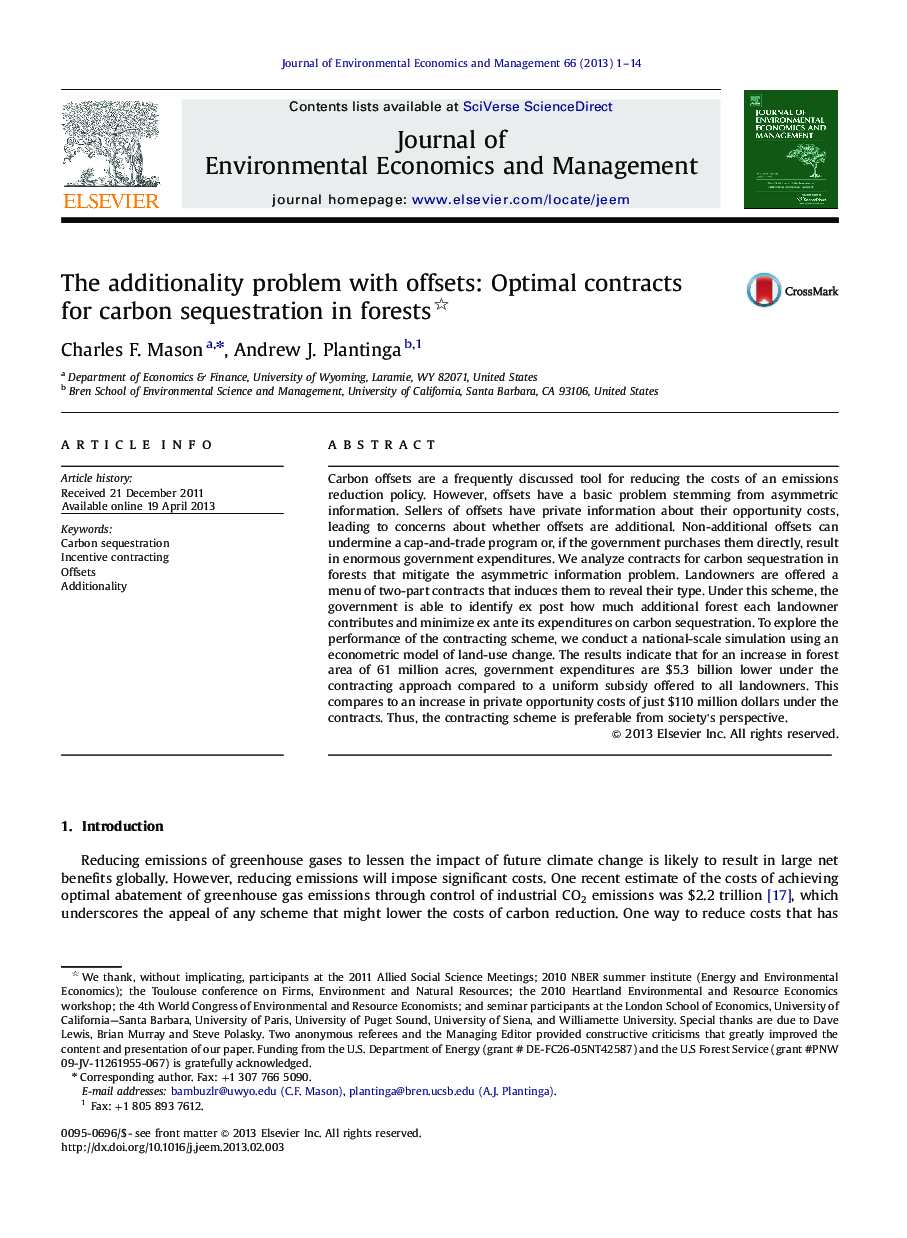| Article ID | Journal | Published Year | Pages | File Type |
|---|---|---|---|---|
| 10475593 | Journal of Environmental Economics and Management | 2013 | 14 Pages |
Abstract
Carbon offsets are a frequently discussed tool for reducing the costs of an emissions reduction policy. However, offsets have a basic problem stemming from asymmetric information. Sellers of offsets have private information about their opportunity costs, leading to concerns about whether offsets are additional. Non-additional offsets can undermine a cap-and-trade program or, if the government purchases them directly, result in enormous government expenditures. We analyze contracts for carbon sequestration in forests that mitigate the asymmetric information problem. Landowners are offered a menu of two-part contracts that induces them to reveal their type. Under this scheme, the government is able to identify ex post how much additional forest each landowner contributes and minimize ex ante its expenditures on carbon sequestration. To explore the performance of the contracting scheme, we conduct a national-scale simulation using an econometric model of land-use change. The results indicate that for an increase in forest area of 61 million acres, government expenditures are $5.3 billion lower under the contracting approach compared to a uniform subsidy offered to all landowners. This compares to an increase in private opportunity costs of just $110 million dollars under the contracts. Thus, the contracting scheme is preferable from society's perspective.
Related Topics
Social Sciences and Humanities
Economics, Econometrics and Finance
Economics and Econometrics
Authors
Charles F. Mason, Andrew J. Plantinga,
